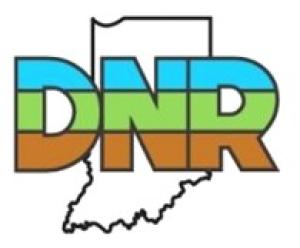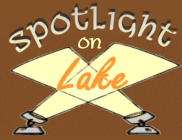
Renew your license in time for trout season
From late March to mid-May, our staff are busy stocking lakes and streams with rainbow and brown trout. More than 60,000 trout are expected to be stocked throughout Indiana this spring, including 23,500 rainbow trout.

Fishing licenses from the 2024 season expired March 31, so make sure to renew your license and add a trout/salmon stamp in time for stream trout season opening on April 26.

Celebrate National Volunteer Week
From April 20-26, we’re celebrating National Volunteer Week! By sharing time and skills with DNR, volunteers help enrich and conserve Indiana’s natural resources and the quality of life for present and future generations.
Our staff continuously recognizes and truly values the conservation work completed by our volunteer team members. Whether they are removing invasive plants, collecting data on fish and wildlife populations, or helping with the many day-to-day office and property tasks, they are essential and appreciated!
Interested in volunteer service with DNR? Please visit our volunteer webpage to create a volunteer profile and learn more about upcoming opportunities.

It’s turkey time
Spring turkey season begins April 23. Grab your turkey license and game bird stamp, and head out to hunt from April 23 to May 11.
Is there someone age 17 or younger you’d like to take hunting? Youth turkey season is April 19-20. Hoosiers 17 or younger on the date of the hunt can participate but must be accompanied by an adult who is at least 18 years of age. Find more information and regulations on our youth hunts webpage.
Remember, only one bearded bird is allowed to be harvested in the regular and youth spring turkey seasons.

Crawfish frog restoration updates
DNR biologists recently relocated state endangered crawfish frog eggs (pictured) from a large Greene County population to Angel Mounds State Historic Site in Evansville. The relocation is part of an effort to re-establish the crawfish frog population on the site. These frogs historically occurred at Angel Mounds, but they died out in the 1980s. This is the second year that eggs have been moved to the site to restore its population.
Biologists also collected eggs for a captive-rearing or “headstarting” project where they will be hatched, raised as tadpoles, and then released as small frogs at a second recovery site. The DNR is also working to identify other recovery sites in western Indiana where crawfish frogs can be re-established.
DNR’s efforts related to rare and endangered species are supported, in part, by donations to the Indiana Nongame Wildlife Fund. Learn more about the reptile and amphibian projects the fund helps support by visiting our website.

New dashboard tracks trout and salmon passage
The spring steelhead run (the migration of steelhead trout from Lake Michigan into rivers for spawning) has been in full swing on the St. Joseph River throughout March and will continue into April. Anglers can now use a new, interactive dashboard to track the migrating trout and salmon through the South Bend Fish Ladder.
As part of the Interstate Fish Passage Project, fish ladders were built into several dams on the St. Joseph River to allow trout and salmon to safely move from Lake Michigan to Indiana. After the project was completed in the 1990s, fish movement was tracked by camera and recorded onto VHS tapes. Today, Indiana DNR monitors the fishery with a motion-activated camera and special fish counting software, which is used to assess the timing, strength, and composition of trout and salmon runs on the river.
Learn about the fish ladder and see up-to-date quantities of fish here.

Help us keep wildlife wild
Spring means baby animals will be appearing soon! You can help and give them the best chance of survival by doing the following:
• Observe wildlife from a distance. It’s important for them to have space.
• Remember that it is normal for babies to be left alone while their mother looks for food. Baby animals will typically remain still and quiet while waiting for mom. This does not necessarily mean the baby is orphaned. Do not feed the animal.
• If you see a baby animal that has fallen out of a nest or den, you can put it back and quickly leave the area. Hovering near the baby can discourage a mother from coming back, and your scent can attract predators.
• Before doing yard work, check the area to make sure you are avoiding any nests or dens.
• Baby animals have the best chance of survival with their mother. Though done with good intentions, stepping in to help can harm wildlife, so be sure to properly investigate if wildlife needs help.
• If a baby animal truly needs to be rescued and you remove it from the wild, it MUST be turned over to a permitted wildlife rehabilitator within 24 hours. Find a list of our permitted rehabilitators on our website. Contact rehabilitators for guidance BEFORE intervening with an animal.
Thank you for keeping our wildlife wild.

Watch nesting falcons live from Indianapolis
Last year, the DNR ornithology team remodeled the peregrine falcon nest box at Market Tower in downtown Indianapolis. While working, the biologists graciously became our on-screen talent for an Instagram video that highlighted the project. Now, it’s time for the falcons to have their moment of fame. A live feed from a camera placed within the nest box is officially online. This live feed shows real-time footage of these wild birds nesting and rearing their young. Please note that these are wild birds, and some footage could be disturbing to viewers. DNR does not interfere with the birds.

Recent news releases
- LARE grants to benefit 53 lake and stream projects
- Natural Resources Commission approves bobcat trapping rules & advances carbon sequestration rules
- Discover the Outdoors field trip grant application open
Upcoming events
- Apr 12: Wabashiki Volunteer Workday, Wabashkiki FWA
- Apr 19: Guided Hike, Calli Nature Preserve
- Apr 29: Flocking Together with Project WILD and Project Learning Tree, West Lafayette
More
- Buy a license
- Hunting information
- Where to Hunt
- Fishing information
- Where to Fish
- Fish & Wildlife properties

The Indiana Natural Resources Foundation celebrates and preserves Indiana’s natural legacy by raising funds to support the Indiana Department of Natural Resources (DNR) and its programs. Together, we have helped expand public lands, restore wildlife habitat, and create outdoor educational and recreational opportunities for Hoosiers.
About Fish and Wildlife Management in Indiana
Fish and wildlife management and public access are funded by fishing and hunting license revenue and also through the Wildlife and Sport Fish Restoration Programs administered by the U.S. Fish & Wildlife Service. These programs collect excise taxes on sporting arms and ammunition, archery equipment, fishing equipment, and motorboat fuels. The money is distributed among state fish and wildlife agencies based on land size and the number of licensed anglers and hunters in each state. Find out more information about fish and wildlife management in Indiana at wildlife.IN.gov.
